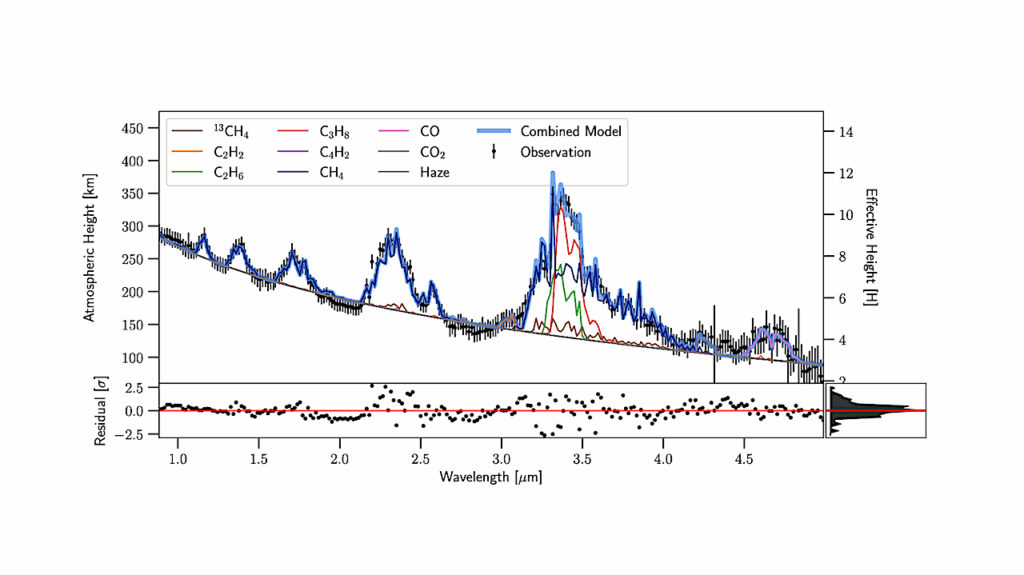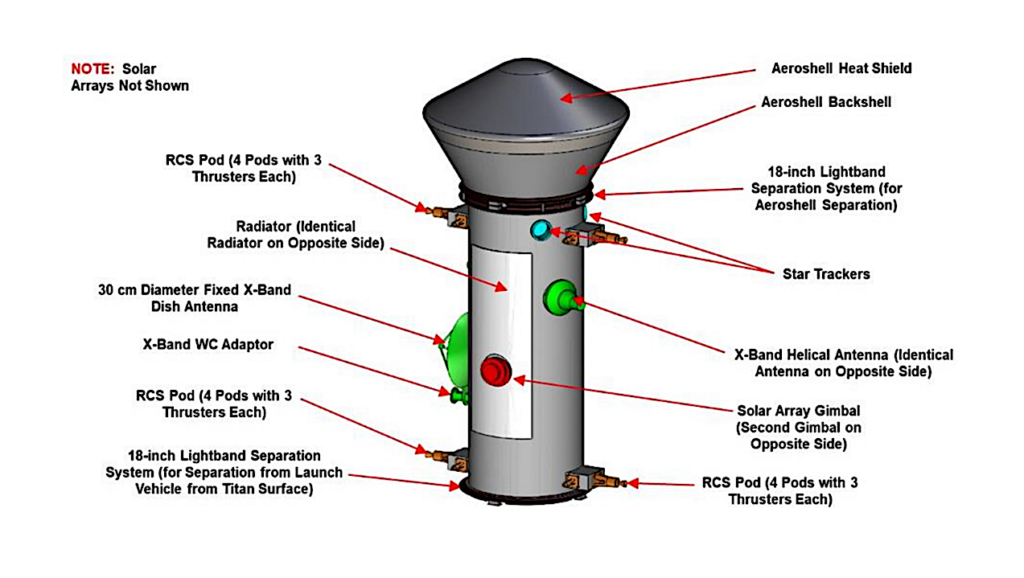Seasonal Changes In The Middle Atmosphere Of Titan From Cassini/CIRS Observations

The Cassini/Composite InfraRed Spectrometer (CIRS) instrument has been observing the middle atmosphere of Titan over almost half a Saturnian year.
We used the CIRS dataset processed through the up-to-date calibration pipeline to characterize seasonal changes of temperature and abundance profiles in the middle atmosphere of Titan, from mid-northern winter to early northern summer all around the satellite. We used limb spectra from 590 to 1500 cm−1 at 0.5-cm−1 spectral resolution, which allows us to probe different altitudes. We averaged the limb spectra recorded during each flyby on a fixed altitude grid to increase the signal-to-noise ratio. These thermal infrared data were analyzed by means of a radiative transfer code coupled with an inversion algorithm, in order to retrieve vertical temperature and abundance profiles.
These profiles cover an altitude range of approximately 100 to 600 km, at 10- or 40-km vertical resolution (depending on the observation). Strong changes in temperature and composition occur in both polar regions where a vortex is in place during the winter. At this season, we observe a global enrichment in photochemical compounds in the mesosphere and stratosphere and a hot stratopause located around 0.01 mbar, both linked to downwelling in a pole-to-pole circulation cell.
After the northern spring equinox, between December 2009 and April 2010, a stronger enhancement of photochemical compounds occurred at the north pole above the 0.01-mbar region, likely due to combined photochemical and dynamical effects. During the southern autumn in 2015, above the South pole, we also observed a strong enrichment in photochemical compounds that contributed to the cooling of the stratosphere above 0.2 mbar. Close to the northern spring equinox, in December 2009, the thermal profile at 74°N exhibits an oscillation that we interpret in terms of an inertia-gravity wave.
Seasonal changes in the middle atmosphere of Titan from Cassini/CIRS observations: temperature and trace species abundance profiles from 2004 to 2017
Christophe Mathé, Sandrine Vinatier, Bruno Bézard, Sébastien Lebonnois, Nicolas Gorius, Donald E. Jennings, Andrei Mamoutkine, Ever Guandique, Jan Vatant d’Ollone
(Submitted on 28 Oct 2019)
Subjects: Earth and Planetary Astrophysics (astro-ph.EP)
Cite as: arXiv:1910.12677 [astro-ph.EP] (or arXiv:1910.12677v1 [astro-ph.EP] for this version)
Submission history
From: Christophe Mathé
[v1] Mon, 28 Oct 2019 13:49:00 UTC (1,664 KB)
https://arxiv.org/abs/1910.12677
Astrobiology, Astrochemistry








